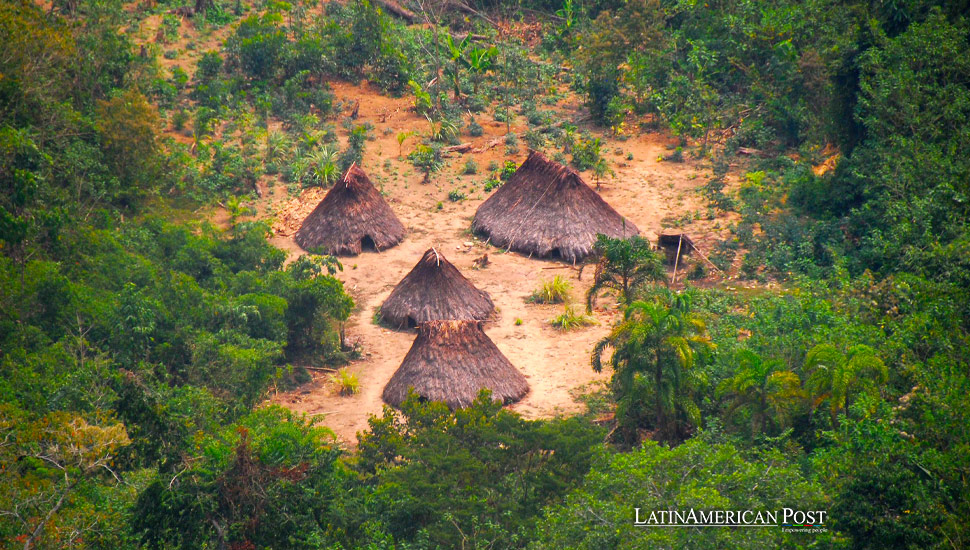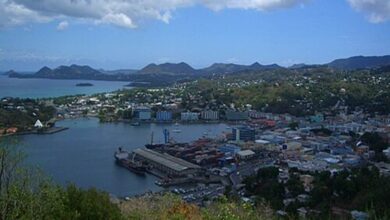Kakataibo People in Peru Defend Ancestral Lands from Drug Traffickers

The Kakataibo people of Peru’s Amazon are facing increasing threats from drug traffickers encroaching on their ancestral lands. Following the murder of their leader, Mariano Isacama, the community is poised to take action to protect their territory and lives.
An Indigenous group in Peru’s Amazon is saying drug traffickers are taking hold of the jungle after its leader was found dead earlier this week. Mariano Isacama, leader of the Indigenous Kakataibo people, had been missing for weeks before his body washed up on the banks of a river in the central Aguaytia region on Sunday. Representatives from the Kakataibo said Isacama had been shot.
His disappearance kicked off an investigation by authorities, though the Kakataibo are now warning that they may take justice into their own hands. “If they do not do their part, we have our Indigenous guard; we have arrows and spears,” Marcelo Odicio, a Kakataibo member, said at a press conference on Wednesday, adding that authorities need to expel the “outsiders.”
“We’re suffering from the encroachment of drug trafficking into our ancestral territories and around our reserves,” Odicio said.
The Struggle for Land and Survival
Isacama, 35, had received nearly constant threats from drug traffickers growing coca leaves in the area, according to Odicio. He added that traffickers offer money to Indigenous groups, who often live off subsistence farming and forestry, in exchange for letting them operate in their territories. When the offers are rejected, the threats begin, Odicio said.
Six Kakataibo heads have been murdered in the past four years, and nearly three dozen Indigenous leaders in the region have been killed in the past decade, he said. Coca is legal to grow in Peru, and can be chewed for energy or brewed into a tea to treat altitude sickness. However, some 90% of Peru’s coca leaf crop goes to producing cocaine, according to police estimates.
Peru is a top coca and cocaine producer alongside Colombia, and its less-populous regions have become attractive to drug traffickers. Coca plantations in the Aguaytia region inched up by 3% last year despite covering less area nationwide. The Kakataibo have uncovered cocaine labs and hidden airstrips used by drug traffickers in their territory in recent years, Odicio said.
Building Self-Defense Strategies
A coalition of Indigenous groups called for meetings to develop a self-defense strategy against traffickers in response to Isacama’s death. Earlier this week, an uncontacted indigenous people in Peru were spotted by the banks of a river, close to where logging companies have concessions. The images – published by the indigenous rights organization Survival International – show dozens of Mashco Piro people close to the banks of the Las Piedras River. Researcher Teresa Mayo told the BBC that the Mashco Piro is the most numerous uncontacted tribe in the world.
She said it was unusual to see so many members of that tribe in one area, and several groups could gather to forage for food. This sighting underscores the vulnerability of isolated tribes in the face of illegal activities that encroach on their lands, highlighting the urgent need for protective measures.
A Broader Context of Injustice
The challenges faced by the Kakataibo are not isolated incidents but part of a larger pattern of violence and exploitation against Indigenous communities in Latin America. The region’s rich natural resources have long been a double-edged sword, providing both sustenance and a target for exploitation. From illegal mining and logging to narcotics trafficking, these activities threaten the livelihoods and very existence of Indigenous peoples.
In Brazil, for example, Indigenous leaders have similarly raised alarms over the invasion of their lands by illegal miners and loggers. The deforestation and pollution caused by these activities not only destroy ecosystems but also drive away wildlife that Indigenous communities rely on for food. Moreover, the encroachment often brings violence, as those who resist are met with threats and, all too often, murder.
The Role of Government and International Support
While local Indigenous groups are mobilizing to protect their lands, there is a pressing need for more robust governmental and international support. Authorities in Peru must enforce laws protecting Indigenous territories and crack down on illegal activities that threaten these communities. International organizations and neighboring countries also provide resources and support to preserve these areas, and the people living there are safe.
Efforts must include enforcement and economic support for sustainable development initiatives. By investing in education, healthcare, and alternative livelihoods, governments can help reduce the financial incentives for Indigenous communities to cooperate with traffickers. Programs that promote sustainable agriculture, eco-tourism, and other environmentally friendly industries can provide much-needed income without compromising the integrity of Indigenous lands.
The murder of Mariano Isacama is a stark reminder of the ongoing struggle for land and rights faced by Indigenous peoples in Latin America. It calls for immediate and sustained action from local and international communities to protect these vulnerable populations. By standing in solidarity with Indigenous groups, supporting their efforts to defend their lands, and pushing for comprehensive policies that address the root causes of exploitation and violence, there is hope for a safer, more just future.
Also read: Technology Unveils Secrets of Ancient Peruvian Adobe City
The Kakataibo’s story is one of resilience and determination. As they navigate the threats posed by drug traffickers, they serve as a powerful example of the fight for Indigenous rights and environmental justice. Their plight is a call to action for all who value human rights and preserving our planet’s precious ecosystems.





